-
- Global AMC MENU
- NEWS
- HEALTH
- PEOPLE
- Introduction
“I Have Gained A Broader Perspective On Anesthesia”
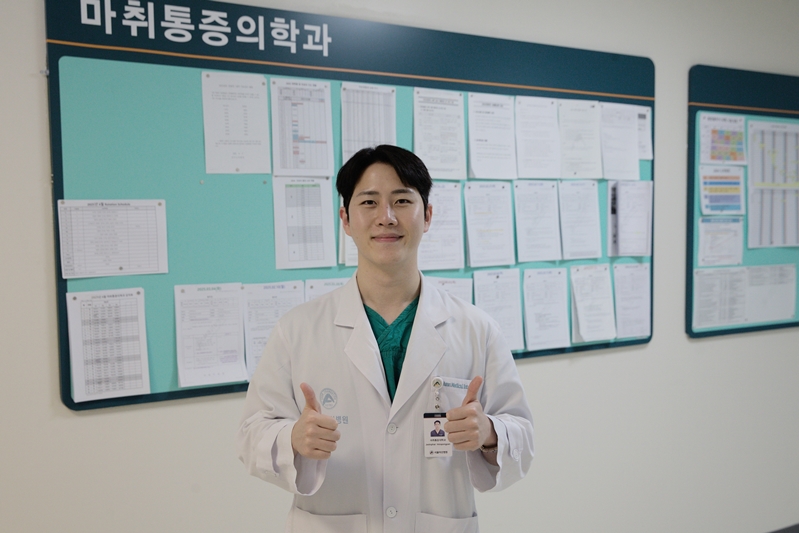
▲ Jedniphat Intrapongpan, Clinical Fellow from Thailand, from the Department of Anesthesiology and Pain Medicine at Asan Medical Center
While working as an anesthesiologist for three years at a university hospital in Thailand with over 2,000 beds, I had the opportunity to attend a medical conference in Seoul, and that was when I found out about the International Visiting Scholars Program at Asan Medical Center. I wanted to learn the know-how of a world-renowned institution, so I applied, and since September 2024, I have been training in the Department of Anesthesiology and Pain Medicine at Asan Medical Center, focusing on orthopedic surgery anesthesia and acute pain management.
.jpg)
#WithMyORColleagues #DoubleThumbsUp
The G-Rosette Operating Room feels like a second home.
As a specialist in the Department of Anesthesiology and Pain Medicine, I spend most of my time in the G-Rosette operating room on the 3rd floor of the New Building. My supervising professor, Professor Won Uk Koh from the Department of Anesthesiology and Pain Medicine at Asan Medical Center, along with the rest of the medical staff, have been thoughtful and kind, making me feel completely at ease during my fellowship. I was initially surprised that the techniques for ultrasound-guided peripheral nerve blocks and epidural nerve blocks were different from those used in Thailand. In Thailand, the focus is usually on a specific target, but at Asan Medical Center, they consider a broader range of surrounding structures such as nerves, blood vessels, bones, and tendons for patient safety. This has truly broadened my view of anesthesia.
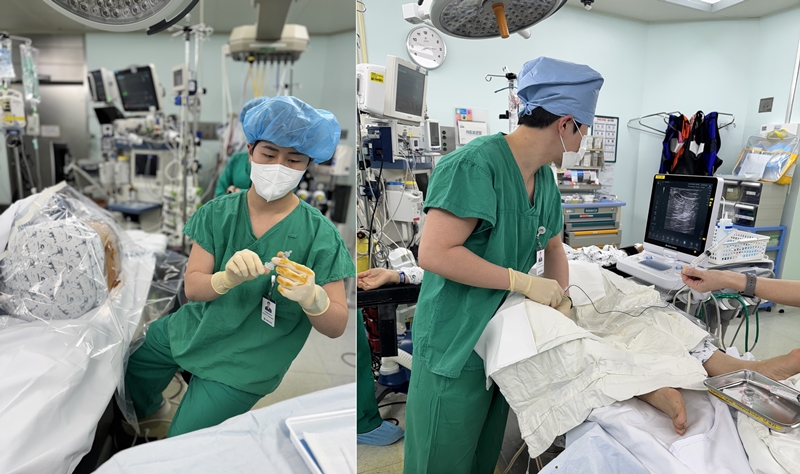
#FocusAndPassion
There was an elderly patient for whom anesthesia was particularly challenging.
There was an elderly patient in his 80s who had to undergo leg amputation due to a severe infection in the lower limb. He had cardiac conditions, including arrhythmia, as well as respiratory disease. Considering his age and overall health status, general anesthesia was not a viable option. Spinal anesthesia wasn’t an option either, as he was on anticoagulant medication. We instead performed a nerve block through the thigh, which provided effective anesthesia and enabled the surgery to proceed safely. In Thailand, such cases are often managed with general anesthesia despite the risks. If we had done that, the patient would likely have required intensive care after surgery.
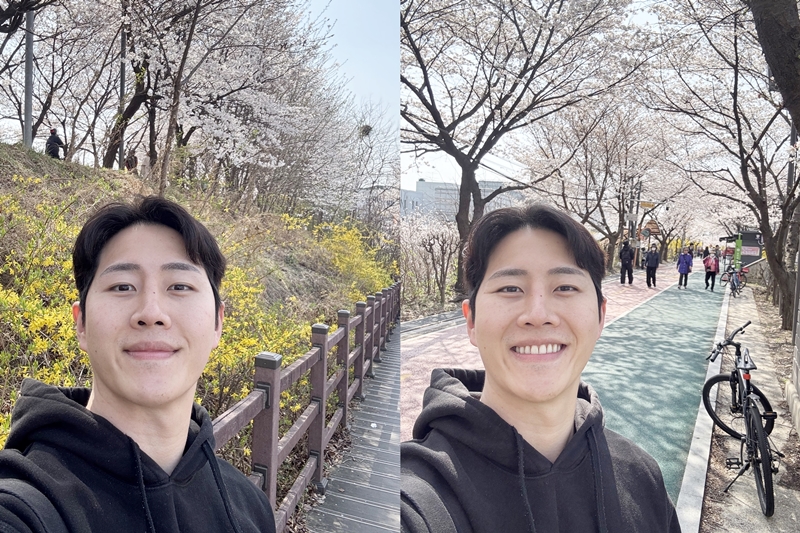
#WalksBySeongnaecheon #GoodWeatherGoodMood
Koreans seem to take food very seriously.
My Korean colleagues are passionate when it comes to talking about food and are always eager to share their favorite restaurants. I also heard that asking “Have you eaten?” is a unique part of greeting in Korea. I was amazed by how many side dishes come with a typical Korean meal. Oh! One of my colleagues introduced me to ‘samgyetang’ (ginseng chicken soup), and from that day on, I was hooked! My Korean friends teased me, saying I had the taste of an elderly person. But I was so into ‘samgyetang’ that I visited over ten different restaurants in my first few months. Eventually, I found my ultimate favorite near ‘Gyeongbokgung Palace’. It’s such a famous place that I probably don’t need to mention the name! (laughs)
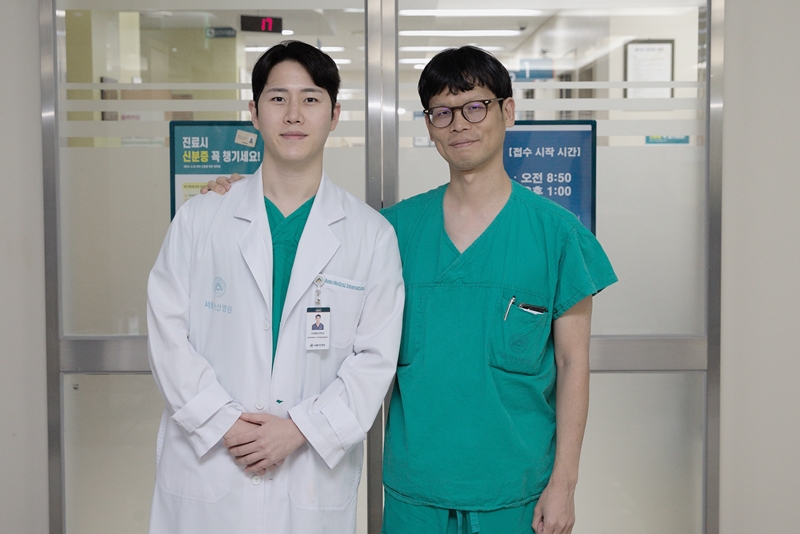
#WithProfessorKo #Grateful
I feel more confident in my growth.
In Thailand, when administering anesthesia for orthopedic surgeries, we monitor basic indicators like oxygen saturation, blood pressure, and ECG in severe cases. At Asan Medical Center, they also use depth-of-anesthesia monitoring and pain monitoring technology. I also saw that even postoperative pain is managed directly by specialists. Experiencing this different system has taught me a lot. I truly feel like I have grown a few levels! I didn’t have much interest in clinical research before, but this training has sparked many new ideas. I am determined to write a strong paper and get it published in a high-impact journal!
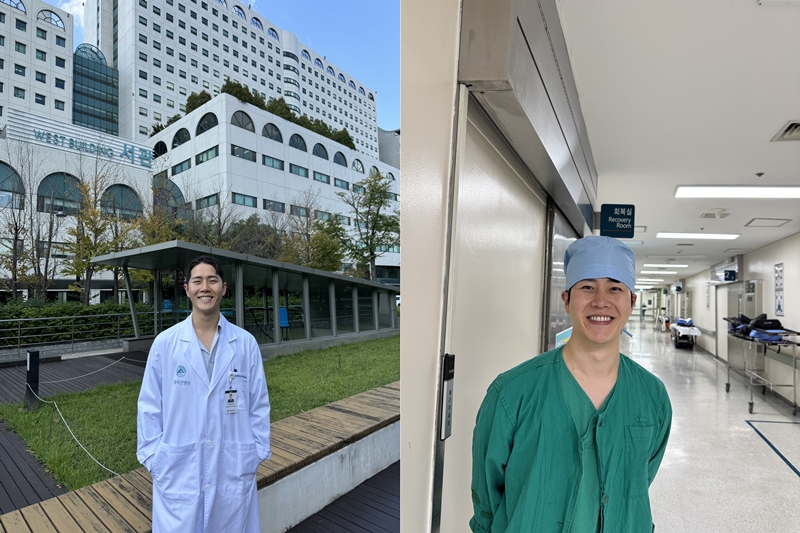
▲ Jedniphat Intrapongpan, Clinical Fellow from Thailand, from the Department of Anesthesiology and Pain Medicine at Asan Medical Center












